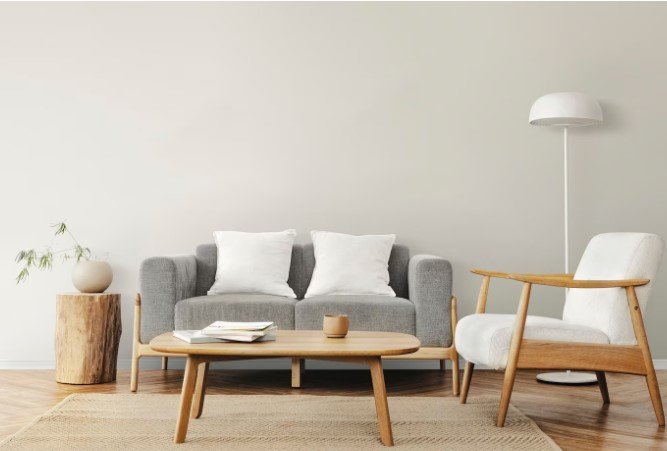Thoughtful space planning is essential in creating functional, comfortable, and aesthetically pleasing environments. With increasing urban density and limited living spaces, individuals and businesses alike are turning to intentional design to optimize each square foot. Beyond the visible impact on a room’s layout, thoughtful space planning influences lifestyle, productivity, well-being, and even environmental sustainability. This article explores the hidden benefits of careful spatial organization, focusing on how it enhances the efficiency, flexibility, and harmony of any space.
Enhanced Efficiency and Productivity
Well-planned spaces streamline movement and activity, reducing the time and energy spent on daily tasks. In residential spaces, for example, a well-structured kitchen minimizes unnecessary movement and improves the flow between cooking, storage, and cleanup areas. In office environments, optimizing layout enhances productivity by reducing distractions and facilitating better collaboration among team members. Spaces with clearly defined zones create natural pathways, making navigation smoother and less disruptive.
In commercial settings, space planning can significantly improve workflow and employee morale. By arranging workstations, communal areas, and meeting rooms thoughtfully, businesses can foster both collaborative and independent workspaces, depending on employees’ needs. For instance, incorporating open areas for brainstorming sessions alongside quiet zones for focused work can meet diverse work styles, leading to higher productivity and job satisfaction. Thoughtful additions such as commercial recessed floor mats can also contribute to a safer and more organized environment, reducing slip hazards and ensuring a professional appearance.
Improved Well-being and Comfort
The link between physical space and mental well-being is increasingly evident, with poorly organized spaces often resulting in stress and discomfort. Thoughtful space planning considers the sensory experience of a room, incorporating natural light, ventilation, and ergonomic furniture to enhance comfort. Spaces that are easy to navigate and uncluttered can reduce anxiety, creating a peaceful environment.
Strategic planning also ensures that spaces cater to specific needs, whether for relaxation, creativity, or socializing. A family living room with flexible seating arrangements, for example, can encourage bonding, while a quiet reading nook provides a retreat for solitude. A well-designed space accommodates diverse moods and activities, fostering mental and emotional well-being.
Customization with a Floor Plan Creator
A floor plan creator is a powerful tool that allows users to visualize space layouts before making any physical changes. By experimenting with different configurations and designs, one can determine the best arrangement for a room or entire building. These tools offer customization options, enabling users to adjust measurements, furniture placement, and other elements to create an optimal setup.
Floor plan creators are not only useful for new construction but also for remodeling or repurposing existing spaces. They allow users to experiment with layouts in real-time, enabling informed decisions that enhance functionality and aesthetics. For example, users can plan for optimal furniture placement, ensuring adequate circulation and reducing potential clutter.
The versatility of a floor plan creator also supports collaboration among homeowners, designers, and contractors. By providing a visual reference, it simplifies communication and ensures that everyone involved in the project understands the intended layout. This reduces misunderstandings, speeds up the design process, and enhances the final result.
Flexibility and Future-Proofing
Thoughtful space planning goes beyond current needs, anticipating future changes and adapting to evolving lifestyles. Families, for example, can benefit from adaptable layouts that accommodate growing children, work-from-home setups, or multigenerational living. An office with modular furniture can be reconfigured for different project requirements, supporting both expansion and downsizing as needed.
Flexible spaces also maximize the functionality of smaller areas. By incorporating multipurpose furniture and movable partitions, it is possible to transform a single room into multiple functional zones. This adaptability minimizes the need for costly renovations and allows spaces to grow and change in response to their occupants’ evolving needs.
Energy Efficiency and Environmental Impact
Efficient space planning can also reduce a building’s energy consumption, leading to lower utility bills and a smaller environmental footprint. Thoughtfully organized layouts leverage natural light and ventilation, reducing dependence on artificial lighting and HVAC systems. In climates with significant seasonal variations, designing with solar orientation in mind can help maintain comfortable indoor temperatures, decreasing heating and cooling demands.
Beyond energy savings, environmentally-conscious space planning minimizes material waste. By carefully planning every aspect of a space, from wall placement to fixture installations, it is possible to reduce the amount of construction waste generated. Floor plan creators can simulate layouts that use materials efficiently, helping homeowners and builders make sustainable choices. This aligns with the growing trend of green architecture, which emphasizes reduced resource consumption and environmental impact.
Practical Solutions with a Floor Plan Creator
Using a floor plan creator provides practical solutions for creating organized, functional spaces without physically rearranging furniture. This tool is particularly beneficial for those with limited space, as it allows users to visualize how to make the most of every square foot. Through customizable templates and 3D visualizations, floor plan creators offer a realistic preview of the end result.
A floor plan creator can also provide insights into potential issues before they arise, such as insufficient clearance for door swings or obstructed pathways. By identifying these challenges in advance, it prevents costly adjustments later in the project. Moreover, these digital tools can integrate with design software, enabling users to experiment with different decor styles and color schemes. This simplifies the design process, ensuring that the chosen layout complements the desired aesthetic.
Fostering Social Connections and Community
Spaces planned with intention encourage social interactions and community building. In homes, open-plan kitchens and dining areas create inviting settings for family gatherings, while separate living areas allow for privacy and personal downtime. Similarly, in urban spaces, thoughtful design integrates communal areas such as courtyards, parks, or shared workspaces that foster social engagement and a sense of community.
For businesses, collaborative areas can inspire teamwork and creativity among employees. A well-designed layout that promotes interaction between departments enhances communication and collaboration, strengthening the company’s culture. In educational or healthcare facilities, space planning that prioritizes accessibility and comfort can create more inclusive, supportive environments that foster trust and engagement.
Enhanced Property Value and Marketability
A well-planned space is often more attractive to potential buyers or tenants, translating to higher property value and marketability. Homes and offices with efficient layouts, ample storage, and aesthetic appeal are in demand, as they offer immediate usability without the need for extensive renovation. Real estate agents frequently highlight these features to demonstrate the property’s functionality and potential.
In commercial properties, thoughtful space planning maximizes leasing potential. Businesses seek office spaces with layouts that can accommodate a variety of activities, from client meetings to private work. For retail spaces, strategic planning of aisles, display areas, and flow paths can significantly influence customer behavior, boosting sales and enhancing the shopping experience. Thus, the benefits of thoughtful space planning extend to financial returns, providing long-term value for property owners.
Conclusion
The hidden benefits of thoughtful space planning extend far beyond aesthetics, shaping how we interact with, navigate, and experience our environments. By enhancing efficiency, well-being, flexibility, and sustainability, well-planned spaces serve as a foundation for better living and working conditions. Tools like floor plan creators simplify this process, allowing users to customize layouts that reflect their needs and aspirations. Whether creating a welcoming home, a productive office, or a sustainable building, thoughtful space planning reveals possibilities that may otherwise go unnoticed.



